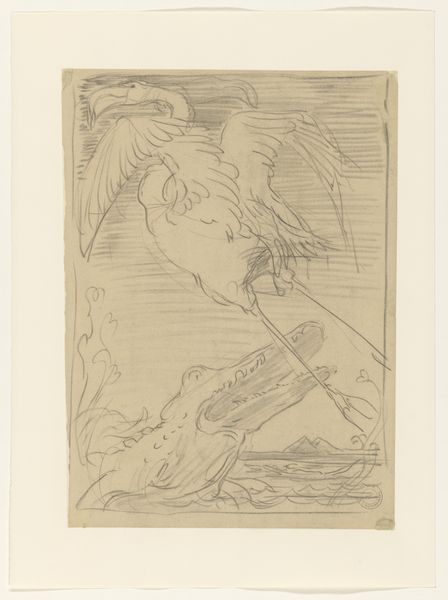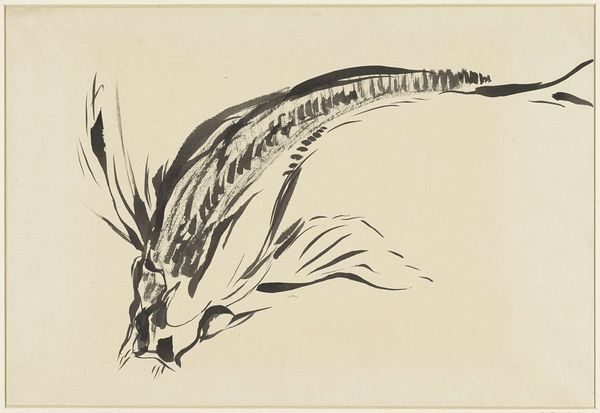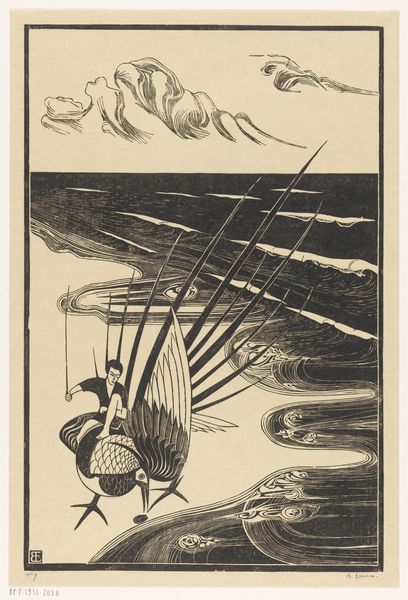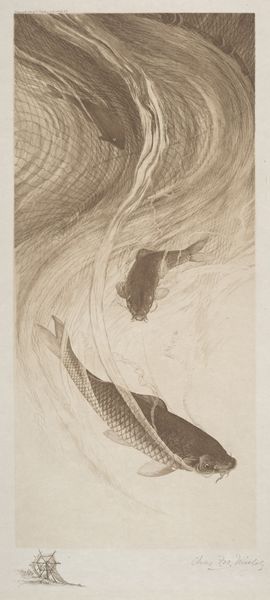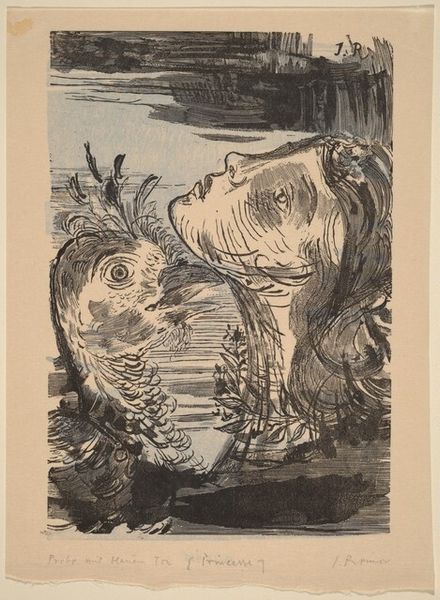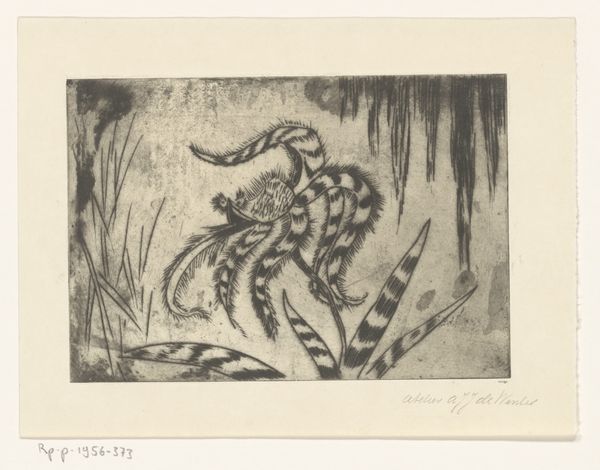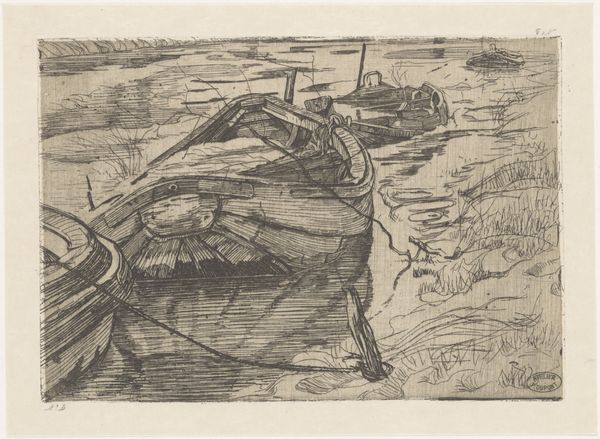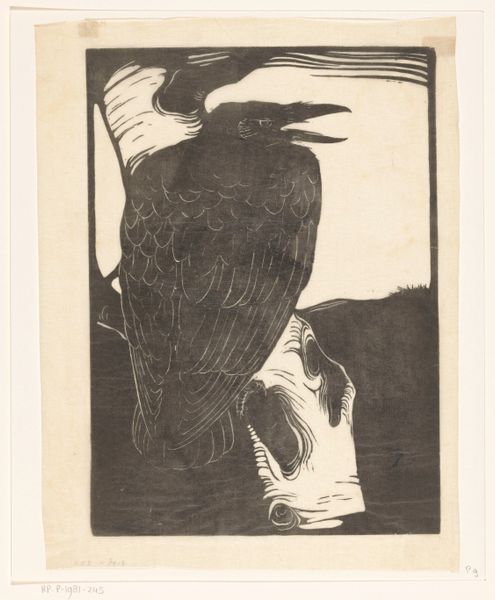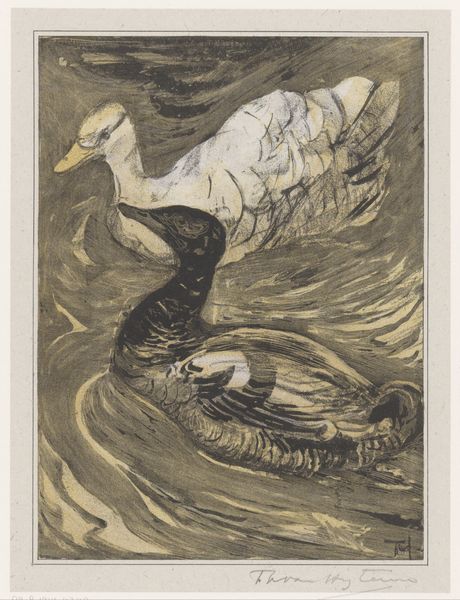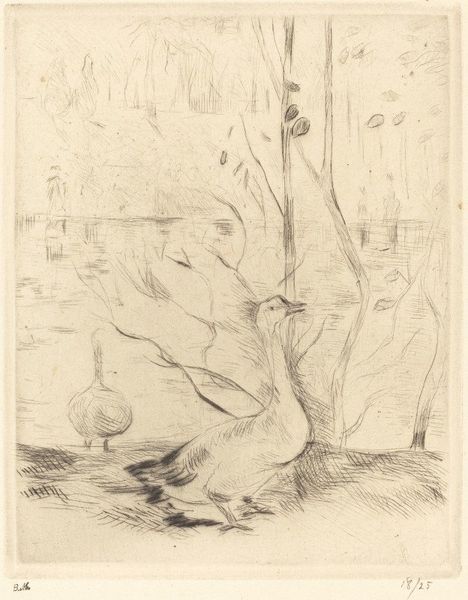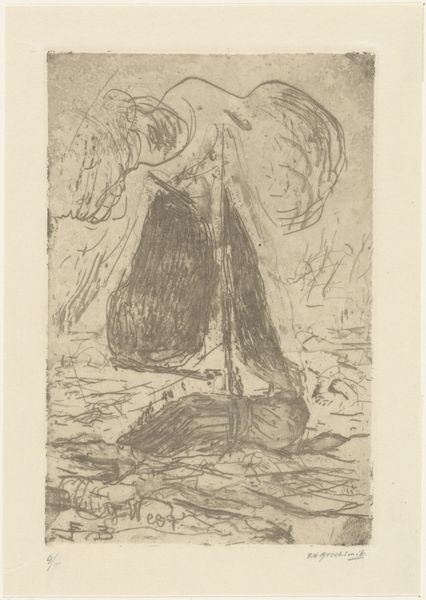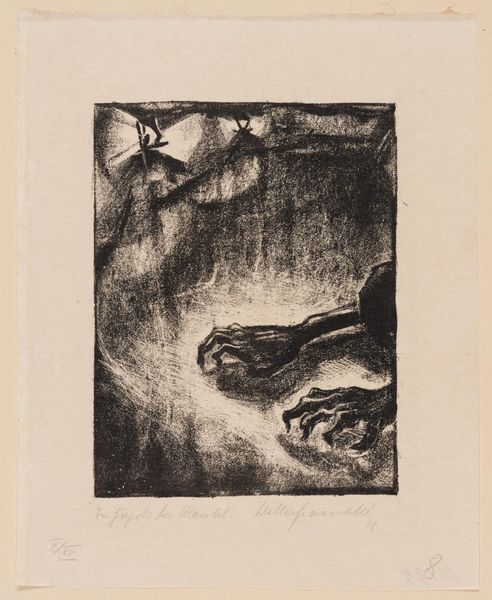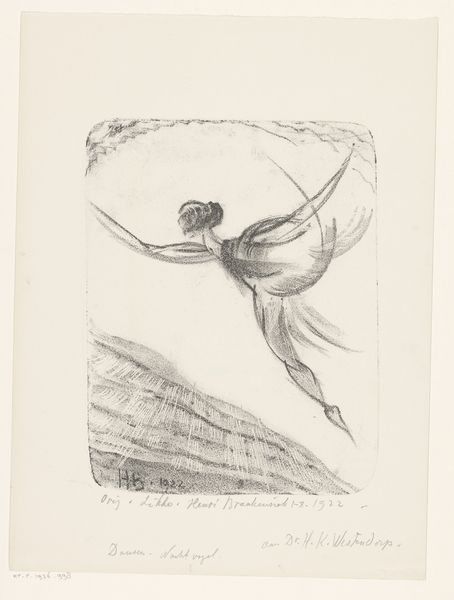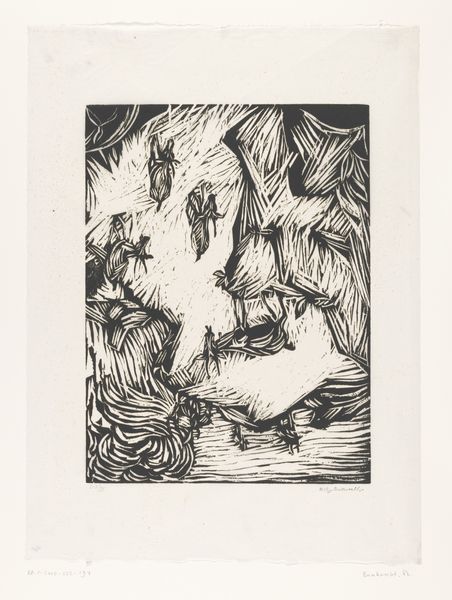
drawing, print, etching
#
drawing
#
toned paper
#
art-nouveau
# print
#
etching
#
landscape
#
etching
#
figuration
Dimensions: height 128 mm, width 92 mm
Copyright: Rijks Museum: Open Domain
Curator: Allow me to introduce you to Bernard Essers' "Figuur zittend op een fazant op het strand," created around 1915. It's an intriguing piece blending etching and printmaking techniques. Editor: My initial impression is whimsical, almost surreal. There's a certain lightness in the rendering, despite the unusual juxtaposition of figure and creature on the shore. It reminds me of art nouveau aesthetics, specifically with those swirling wave details. Curator: The choice to depict a figure astride a pheasant immediately opens up questions of power dynamics and gendered expectations. We must consider the historical context of 1915 – a period marked by immense societal shifts and questioning of established norms during wartime. Who is this figure, what is their relationship with the strange creature, and how do we understand its relation with the backdrop and overall narrative. Editor: Considering Essers’ process, I wonder about the availability and cost of materials during wartime. An etching allows for repeated production, thus spreading the image widely. I see the detailed linework, which adds to this sense of meticulous control, almost as if to tame these fantastical subjects in a medium that feels rather systematic and repeatable, challenging our preconceived notions of ‘high art’ materials versus common printing. Curator: Indeed. Also the gender expectations for male artists around that time were focused on either painting or sculpture, which puts into question, Essers' deliberate use of the graphic print to convey themes tied to politics, gender, race. It raises the importance of interrogating why specific materials were chosen. Editor: What fascinates me is how Essers, through printmaking, a potentially democratized art form, could be speaking directly to shifts in labor and societal norms during wartime. The pheasant, for example, historically a symbol of wealth, becomes an active element ridden, which opens further questions of what sort of labor and materials were available, consumed. It allows viewers to see shifts in the relations of production as expressed across race and class. Curator: Precisely! This exploration into Essers' creation is about understanding those layers of power. By drawing connections with philosophies and broader feminist themes in art history, Essers questions gendered assumptions through print making and subject matters within our established artistic practices, not only back then, but now too. Editor: Right, shifting our lens shows that an artwork, no matter its creation form or subject, is an opportunity to analyze the historical record in terms of labor, material conditions and social values of any time. Curator: I find myself wondering what "truth" the artist wanted to present about what lies under political expectations, which makes one rethink how identity in artistic context is produced through historical context. Editor: Absolutely, examining the materials and process pulls into the now new historical threads that affect labor forces—which reveals complex interdependencies!
Comments
No comments
Be the first to comment and join the conversation on the ultimate creative platform.
